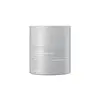What's inside
What's inside
 Key Ingredients
Key Ingredients

 Benefits
Benefits

 Concerns
Concerns

 Ingredients Side-by-side
Ingredients Side-by-side

Ethylhexyl Palmitate
EmollientHelianthus Annuus Seed Oil
EmollientPolyglyceryl-10 Diisostearate
EmulsifyingPolyglyceryl-6 Dicaprate
EmulsifyingPolyethylene
AbrasiveCetearyl Alcohol
EmollientDipropylene Glycol
HumectantCI 77891
Cosmetic ColorantCaprylic/Capric Triglyceride
MaskingVigna Radiata Seed Extract
Skin ConditioningCamellia Sinensis Seed Oil
HumectantMelia Azadirachta Leaf Extract
Skin ConditioningAluminum Hydroxide
EmollientCapryloyl Salicylic Acid
ExfoliatingHippophae Rhamnoides Fruit Oil
Skin ProtectingMelia Azadirachta Flower Extract
Skin ConditioningCoccinia Indica Fruit Extract
Skin ConditioningWater
Skin ConditioningSolanum Melongena Fruit Extract
Skin ConditioningAmber Powder
Ceramide NP
Skin ConditioningGluconolactone
Skin ConditioningCurcuma Longa Root Extract
MaskingOcimum Sanctum Leaf Extract
Skin ConditioningGlycerin
HumectantCorallina Officinalis Extract
Skin ConditioningMoringa Oleifera Seed Oil
EmollientButylene Glycol
Humectant1,2-Hexanediol
Skin ConditioningLactobacillus/Soymilk Ferment Filtrate
Skin ConditioningHydrogenated Lecithin
EmulsifyingAsiaticoside
AntioxidantMadecassic Acid
Skin ConditioningAsiatic Acid
Skin ConditioningCholesterol
EmollientEthylhexyl Palmitate, Helianthus Annuus Seed Oil, Polyglyceryl-10 Diisostearate, Polyglyceryl-6 Dicaprate, Polyethylene, Cetearyl Alcohol, Dipropylene Glycol, CI 77891, Caprylic/Capric Triglyceride, Vigna Radiata Seed Extract, Camellia Sinensis Seed Oil, Melia Azadirachta Leaf Extract, Aluminum Hydroxide, Capryloyl Salicylic Acid, Hippophae Rhamnoides Fruit Oil, Melia Azadirachta Flower Extract, Coccinia Indica Fruit Extract, Water, Solanum Melongena Fruit Extract, Amber Powder, Ceramide NP, Gluconolactone, Curcuma Longa Root Extract, Ocimum Sanctum Leaf Extract, Glycerin, Corallina Officinalis Extract, Moringa Oleifera Seed Oil, Butylene Glycol, 1,2-Hexanediol, Lactobacillus/Soymilk Ferment Filtrate, Hydrogenated Lecithin, Asiaticoside, Madecassic Acid, Asiatic Acid, Cholesterol
Cetyl Ethylhexanoate
EmollientPEG-10 Isostearate
EmulsifyingCaprylic/Capric Triglyceride
MaskingPolyethylene
AbrasivePEG-20 Glyceryl Triisostearate
EmollientSorbeth-30 Tetraoleate
EmulsifyingSorbitan Sesquioleate
EmulsifyingGlyceryl Caprylate
EmollientEthylhexylglycerin
Skin ConditioningCeramide NP
Skin Conditioning2,3-Butanediol
HumectantHydrogenated Lecithin
EmulsifyingGlyceryl Stearate
EmollientCeramide Ns
Skin ConditioningCeramide As
Skin ConditioningCeramide AP
Skin ConditioningCholesterol
EmollientCeramide EOP
Skin ConditioningTocopherol
AntioxidantPanthenol
Skin ConditioningWater
Skin ConditioningPantolactone
HumectantCetyl Ethylhexanoate, PEG-10 Isostearate, Caprylic/Capric Triglyceride, Polyethylene, PEG-20 Glyceryl Triisostearate, Sorbeth-30 Tetraoleate, Sorbitan Sesquioleate, Glyceryl Caprylate, Ethylhexylglycerin, Ceramide NP, 2,3-Butanediol, Hydrogenated Lecithin, Glyceryl Stearate, Ceramide Ns, Ceramide As, Ceramide AP, Cholesterol, Ceramide EOP, Tocopherol, Panthenol, Water, Pantolactone
 Reviews
Reviews

Ingredients Explained
These ingredients are found in both products.
Ingredients higher up in an ingredient list are typically present in a larger amount.
This ingredient is an emollient, solvent, and texture enhancer. It is considered a skin-softener by helping the skin prevent moisture loss.
It helps thicken a product's formula and makes it easier to spread by dissolving clumping compounds.
Caprylic Triglyceride is made by combining glycerin with coconut oil, forming a clear liquid.
While there is an assumption Caprylic Triglyceride can clog pores due to it being derived from coconut oil, there is no research supporting this.
Learn more about Caprylic/Capric TriglycerideCeramide NP is a type of ceramide and formally known as ceramide 3.
Ceramides are intercellular lipids naturally found in our skin that bonds dead skin cells together to create a barrier. They are known for their ability to hold water and thus are a great ingredient for dry skin.
Ceramides are an important building block for our skin barrier. A stronger barrier helps the skin look more firm and hydrated. By bolstering the skin ceramides act as a barrier against irritating ingredients. This can help with inflammation as well.
If you would like to eat ceramides, sweet potatoes contain a small amount.
Read more about other common types of ceramides here:
Ceramide AP
Ceramide EOP
Cholesterol is a class of organic molecules called lipids. It helps hydrate your skin and is essential to having a healthy skin barrier.
Our skin naturally contains cholesterol in the outermost layer. Besides cholesterol, it also contains ceramides and fatty acids. Cholesterol makes up about 1/4 of your skin's outer layer and barrier. Your skin barrier is responsible for keeping allergens and microbes out. Having a healthy skin barrier is also responsible for keeping your skin firm and plump.
Our bodies use cholestrol to create vitamin D, steroid hormones, and more.
Learn more about CholesterolHydrogenated Lecithin is created from the hydrogenation of lecithin (a group of phospholipids). Hydrogenation is a chemical reaction between hydrogen and another element.
This ingredient is an emollient and emulsifier. As an emollient, it helps soften skin by trapping moisture within. As an emulsifier, it prevents oil and water ingredients from separating.
Polyethylene is a synthetic ingredient that helps the skin retain moisture. It is a polymer.
It is also typically used within product formulations to help bind solid ingredients together and thicken oil-based ingredients. When added to balms and emulsions, it helps increase the melting point temperature.
Water. It's the most common cosmetic ingredient of all. You'll usually see it at the top of ingredient lists, meaning that it makes up the largest part of the product.
So why is it so popular? Water most often acts as a solvent - this means that it helps dissolve other ingredients into the formulation.
You'll also recognize water as that liquid we all need to stay alive. If you see this, drink a glass of water. Stay hydrated!
Learn more about Water